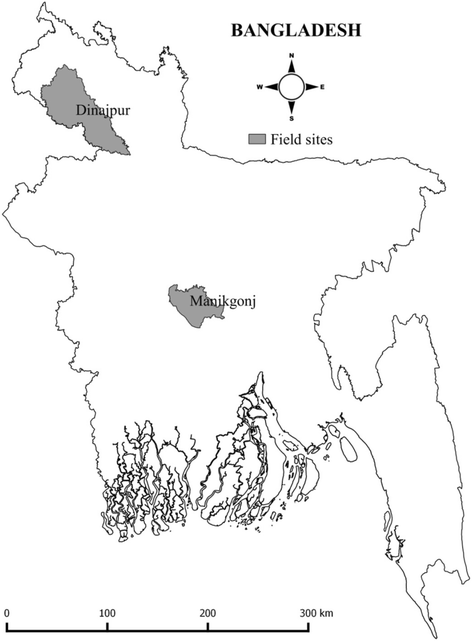Provision versus promotion to develop a handwashing station: the effect on desired handwashing behavior
- PMID: 28476170
- PMCID: PMC5420105
- DOI: 10.1186/s12889-017-4316-6
Provision versus promotion to develop a handwashing station: the effect on desired handwashing behavior
Abstract
Background: Diarrhea prevalence increases from around the time that complementary foods are introduced. Improving caregiver's hand hygiene during food preparation could reduce complementary food contamination and enteric pathogen transmission. Washing hands with soap is more common when water and soap are together at a convenient location. We conducted a three-month pilot intervention to evaluate two options for setting up handwashing stations: i) provide a handwashing station, or ii) help the family to make their own from available materials. Additionally, we assessed the feasibility of this intervention to be integrated with a child feeding program.
Methods: We conducted the intervention among two groups; 40 households received a free of cost handwashing station and another 40 households were motivated to place their own soap/soapy-water and water vessel near the food preparation and child feeding area. Community health workers encouraged caregivers to wash hands with soap/soapy-water before food preparation and feeding a child. They either assisted study participants to install the study-provided handwashing station at the recommended place or encouraged caregivers to develop their own. Field researchers assessed placement and composition of handwashing stations and the feasibility of integrating handwashing and nutrition messages.
Results: By end of the trial, 39/40 households developed their own handwashing station, comprising a bucket, mug and bar soap/soapy-water of which 60% (6/10) households were observed with a functional and complete handwashing station set. Observed handwashing with soap was detected among 8/10 households from the study-provided handwashing station group and 5/10 among households who had made their own handwashing station. Sixty-seven of the 76 caregivers recalled integrated intervention messages on social and health benefits of infant and young child feeding correctly; and all recalled key handwashing with soap times, before food preparation and feeding a child.
Conclusion: Encouraging households to develop their own handwashing station with soap and water to place at a food preparation/child feeding location is feasible over the short term. In the absence of large-scale provision of handwashing stations, caregivers can be encouraged to create and use their own. Integrating handwashing with soap into a nutrition intervention was feasible and acceptable and should be considered by policy makers.
Keywords: Bangladesh; Child nutrition; Complementary feeding; Handwashing behavior; Handwashing station; Integrated intervention.
Figures
Similar articles
-
Designing a handwashing station for infrastructure-restricted communities in Bangladesh using the integrated behavioural model for water, sanitation and hygiene interventions (IBM-WASH).BMC Public Health. 2013 Sep 23;13:877. doi: 10.1186/1471-2458-13-877. BMC Public Health. 2013. PMID: 24060247 Free PMC article.
-
Effect of a water, sanitation and hygiene program on handwashing with soap among household members of diarrhoea patients in healthcare facilities in Bangladesh: a cluster-randomised controlled trial of the CHoBI7 mobile health program.Trop Med Int Health. 2020 Aug;25(8):1008-1015. doi: 10.1111/tmi.13416. Epub 2020 Jul 14. Trop Med Int Health. 2020. PMID: 32406581 Clinical Trial.
-
The effect of handwashing at recommended times with water alone and with soap on child diarrhea in rural Bangladesh: an observational study.PLoS Med. 2011 Jun;8(6):e1001052. doi: 10.1371/journal.pmed.1001052. Epub 2011 Jun 28. PLoS Med. 2011. PMID: 21738452 Free PMC article.
-
Use, adoption, and effectiveness of tippy-tap handwashing station in promoting hand hygiene practices in resource-limited settings: a systematic review.BMC Public Health. 2020 Jun 26;20(1):1005. doi: 10.1186/s12889-020-09101-w. BMC Public Health. 2020. PMID: 32586314 Free PMC article.
-
Outcome evaluation of WASH intervention in rural households at Jawi district, Northwest Ethiopia: Mixed method design, goal based evaluation.Eval Program Plann. 2023 Jun;98:102283. doi: 10.1016/j.evalprogplan.2023.102283. Epub 2023 Apr 7. Eval Program Plann. 2023. PMID: 37084492 Review.
Cited by
-
Viewpoint - Handwashing and COVID-19: Simple, right there…?World Dev. 2020 Nov;135:105086. doi: 10.1016/j.worlddev.2020.105086. Epub 2020 Jul 14. World Dev. 2020. PMID: 32834382 Free PMC article.
-
Acceptability measures of water, sanitation and hygiene interventions in low- and middle-income countries, a systematic review.PLoS Negl Trop Dis. 2022 Sep 12;16(9):e0010702. doi: 10.1371/journal.pntd.0010702. eCollection 2022 Sep. PLoS Negl Trop Dis. 2022. PMID: 36094954 Free PMC article.
-
What are the barriers and facilitators to community handwashing with water and soap? A systematic review.PLOS Glob Public Health. 2023 Apr 19;3(4):e0001720. doi: 10.1371/journal.pgph.0001720. eCollection 2023. PLOS Glob Public Health. 2023. PMID: 37074999 Free PMC article.
-
Impact of integrated WASH and maternal and child health interventions on diarrhea disease prevalence in a resource-constrained setting in Kenya.Trop Med Health. 2024 Aug 30;52(1):56. doi: 10.1186/s41182-024-00616-1. Trop Med Health. 2024. PMID: 39215357 Free PMC article.
-
WASH Benefits Bangladesh trial: management structure for achieving high coverage in an efficacy trial.Trials. 2018 Jul 6;19(1):359. doi: 10.1186/s13063-018-2709-1. Trials. 2018. PMID: 29976247 Free PMC article. Clinical Trial.
References
-
- Guerrant RL, Schorling JB, McAuliffe JF, de Souza MA. Diarrhea as a cause and an effect of malnutrition: diarrhea prevents catch-up growth and malnutrition increases diarrhea frequency and duration. AmJTrop Med Hyg. 1992;47(1):28–35. - PubMed
-
- Yoon PW, Black RE, Moulton LH, Becker S. The effect of malnutrition on the risk of diarrheal and respiratory mortality in children< 2 y of age in Cebu. Philippines Am J Clin Nutr. 1997;65(4):1070–1077. - PubMed
-
- Caulfield LE, de Onis M, Blossner M, Black RE. Undernutrition as an underlying cause of child deaths associated with diarrhea, pneumonia, malaria, and measles. Am J Clin Nutr. 2004;80(1):193–198. - PubMed
MeSH terms
Substances
LinkOut - more resources
Full Text Sources
Other Literature Sources
Medical




